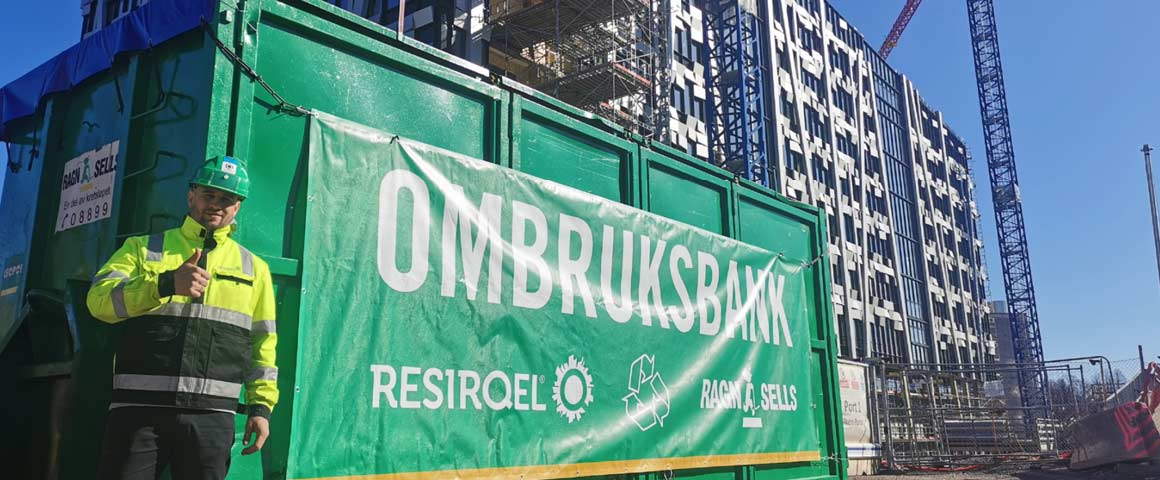
Resirqel and Ragn-Sells launch a Re-use Bank in the construction industry
Resirqel and Ragn-Sells Norway have entered into a collaboration aimed at improving the level of re-use and reducing waste in the construction sector.
12 May 2020The re-use banks are containers that are located at construction sites in collaboration with contractors that are enthusiastic about recycling. Here, they serve as storage facilities for valuable materials: construction materials that have been used before, and that can be re-used.
What is re-use?
In this context, re-use means using construction materials again. Every year the Norwegian construction industry delivers large numbers of high-quality new buildings – while also generating millions of tonnes of waste. Approximately 20,000 buildings are demolished in Norway every year, in addition to which there is about 30% surplus material from the construction process and about 15% waste from restoration and renovation. A large proportion of this material can technically be used again, if conditions are put in place to allow proper and documented re-use.
- Re-used materials have 90-99% less emissions than new products because they do not consume raw materials. They also generate local jobs, because the value-creation and the value chain are local, says Martin Eid, who is a founding partner at Resirqel AS.
Re-use – previously more common
In earlier times, right up until the 60s, re-use was the rule rather than the exception. Construction materials were expensive, so construction methods made good use of re-used materials. A lot has changed since then, and today the rate of re-use in the construction sector is probably less than 1%.
- A lot of us want to do something about this. Both practice and procedures are now being shaped in several areas while various operators and projects are setting specific targets for re-use. Regulatory authorities are working in parallel on clarifying regulations and preparations for auditing in order to prepare for a growing circular economy. Effective solutions incorporated into systems, like the Re-use Bank, are an important part in once again making re-use current practice, says Eid.
Re-use Bank part of the solution
Re-use Bank is a practical solution for collecting surplus materials from building and construction projects. Concepts have been developed by Resirqel with support from Innovation Norway, and they are now being launched with Ragn-Sells as a pilot partner.
- Ragn-Sells is working on several projects with the aim of promoting re-use and material recovery feeding into a circular economy. Together with Resirqel, we want to help create a new and “circular concept” for the building and construction, and property client segments, which we know want good solutions in order for the projects to achieve their environmental goals. The Re-use Bank is a good example of this, and that collaboration between companies can lead to the development of new solutions, says Per Johannessen, from commercial development at Ragn-Sells.
Following several years of trialling and testing different concepts for manual collection, Resirqel has now developed a simple and innovative solution that supports effective collection. The result will be that surplus materials from construction projects will be used again. Re-use Bank will initially be tried out in selected construction projects with environmental ambitions in Oslo and the surrounding area during 2020-2021, focussing on the areas of waste reduction, clean building sites and keeping Co2 emissions to a minimum.
The first projects are already in progress
Among the first projects to get a re-use bank is Økern portal. Vedal Entreprenør AS is positive about trying out the solution, with the goal of better use of left-over materials from goods security measures, and surplus strength-rated timber products left over from temporary structures.
- Manufacture of these resources represents an investment in terms of raw materials, work and processing, and they still possess the documented qualities they had when they were checked as part of the manufacture process. We believe that the construction materials of the future are already in use, says Martin Eid in conclusion.